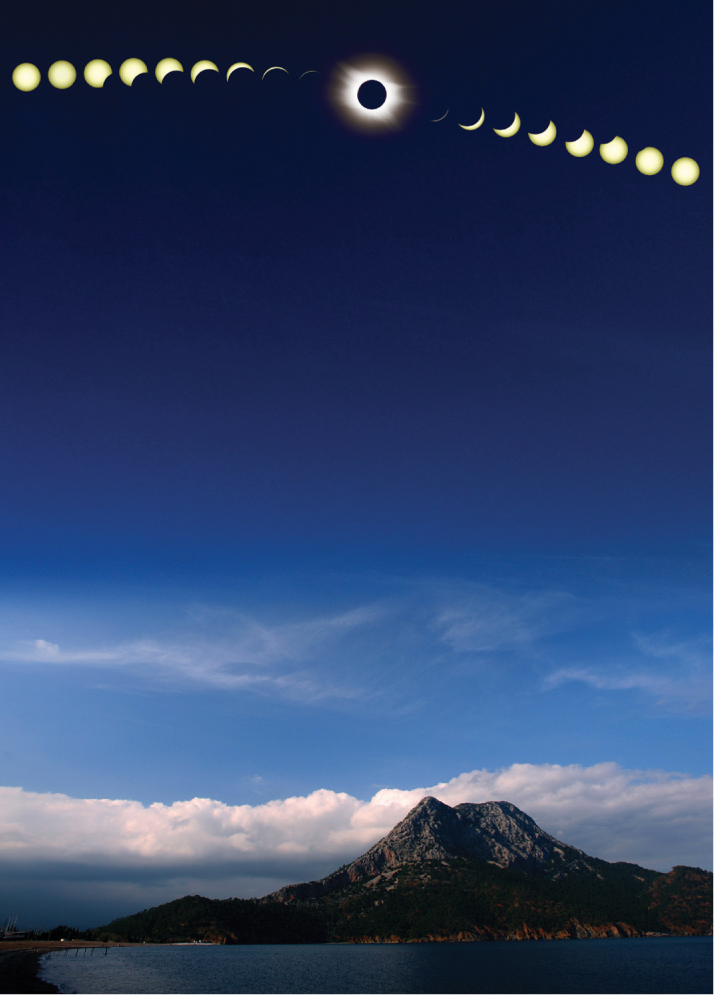47
CHAPTER
3

The Sun in total eclipse, March 29, 2006.
Eclipses and the Motion of the Moon
LEARNING GOALS
By reading the sections of this chapter, you will learn
| 3–1 | Why we see the Moon go through phases |
| 3–2 | Why we always see the same side of the Moon |
| 3–3 | The differences between lunar and solar eclipses |
| 3–4 | Why not all lunar eclipses are total eclipses |
| 3–5 | Why solar eclipses are visible only from certain special locations on Earth |
| 3–6 | How ancient Greek astronomers deduced the sizes of Earth, the Moon, and the Sun |
On March 29, 2006, a rare cosmic spectacle—a total solar eclipse—was visible along a narrow corridor that extended from the coast of Brazil through equatorial Africa and into central Asia. As shown in this digital composite taken in Turkey, the Moon slowly moved over the disk of the Sun. (Time flows from left to right in this image.) For a few brief minutes the Sun was totally covered, darkening the sky and revealing the Sun’s thin outer atmosphere, or corona, which glows with an unearthly pearlescent light.
Such eclipses can be seen only on specific dates from special locations on Earth, so not everyone will ever see the Moon cover the Sun in this way. But anyone can find the Moon in the sky and observe how its appearance changes from night to night, from new moon to full moon and back again, and how the times when the Moon rises and sets differ noticeably from one night to the next.
In this chapter our subject is how the Moon moves as seen from Earth. We will explore why the Moon goes through a regular cycle of phases, and how the Moon’s orbit around Earth leads to solar eclipses as well as lunar eclipses. We will also see how ancient astronomers used their observations of the Moon to determine the size and shape of Earth, as well as other features of the solar system. Thus, the Moon—which has always loomed large in the minds of poets, lovers, and dreamers—has also played a key role in the development of our modern picture of the universe.
48